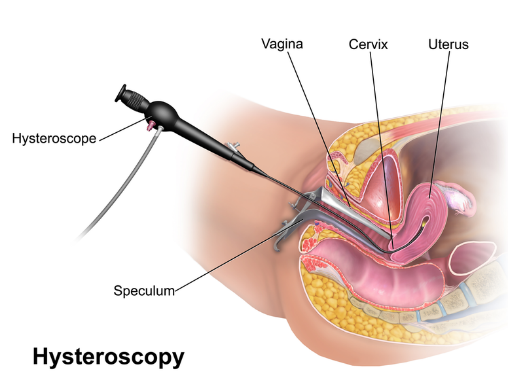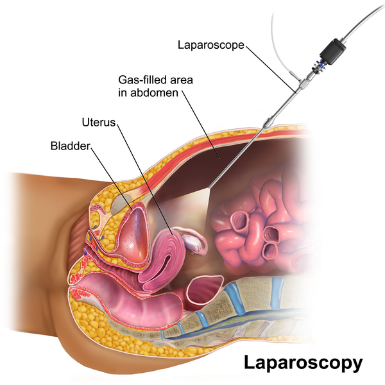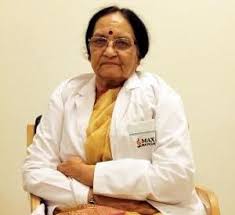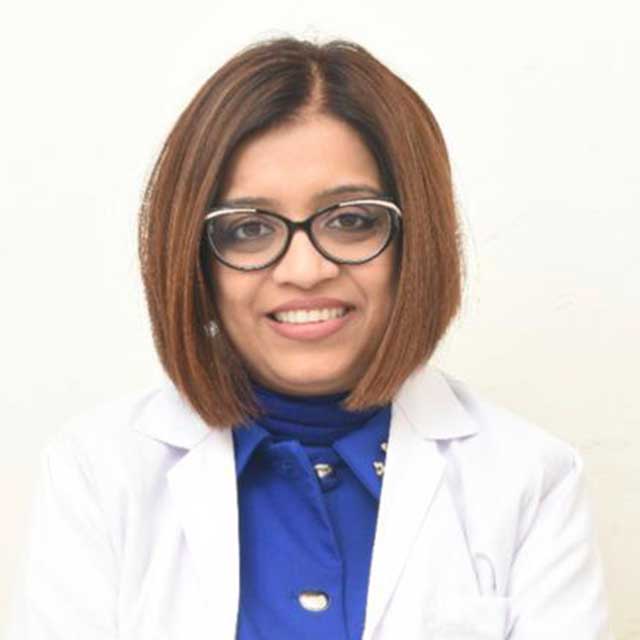Diagnosis
Post a thorough clinical examination, and some routine blood tests like a thyroid test, your gynaecologist will advise one or more of these tests to look for uterine fibroids:
- Ultrasound scan: To visualize the fibroids, their size, location and number. The doctor may also inject saline into the uterus to get a clearer image during the ultrasound.
- Hysteroscopy: The doctor uses a small telescope called a hysteroscope to view inside your vagina and uterus. This procedure is specifically helpful to detect submucosal fibroids.


The doctor makes a small cut on your belly and inserts a small telescope that contains a light and a camera. Laparoscopy helps to detect subserosal fibroids or intramural fibroids. During hysteroscopy and laparoscopy, the doctors may decide to remove the fibroid entirely. They may take out a small piece of the tissue for further tests. This is called a biopsy.
Treatment
Your doctor may not recommend any medicines if the fibroids do not show any symptoms or do not interfere in your daily life. The treatment depends on your age, health, symptoms, type of fibroids, your pregnancy status, etc.
1. Home remedies for acute pain relief
You can try the home remedies listed below to reduce fibroids. However, this treatment may not be effective for all, especially if you have severe fibroids.
- Heating pads.
- Massage.
- Over-the counter pain relivers, such as ibuprofen.
- Vitamin (B1, B6, and E) supplements. However, do talk to a doctor if you wish to take supplements.
2. Medications
Doctors may prescribe any of the following medications if you have any symptoms listed above for fibroids.
- Over-the-counter medicines: If you have mild pain, doctors may recommend some pain relievers. If you experience heavy bleeding, doctors might prescribe hormone-containing pills as treatment. In addition to this, iron supplements can help to prevent anaemia.
- Medicines used to reduce heavy blood flow: Medicines containing hormones can be taken but would be less effective if the fibroids are large.
- Medicines that help to shrink large fibroids: If the medicines used to treat heavy periods do not work, doctors may prescribe gonadotropin-releasing hormone analogues to shrink them.
3. Nonsurgical options: There are alternatives to surgery like uterine artery embolization, endometrial ablation, and MRI-guided procedures to treat fibroids.
4. Surgery: If your symptoms are worsening, your doctor might suggest surgery. Your doctor will discuss the benefits and risks for several surgeries like:
- Hysteroscopy: This procedure utilizes a small telescope, known as a hysteroscope equipped with small surgical instruments to remove the fibroids. This procedure is particularly suitable for women who wish to have babies later.
- Myomectomy: If you are planning to have children later, doctors may recommend a myomectomy. This surgery removes only the fibroids from the uterus.
- Hysterectomy: A surgical method that removes the uterus and/or other parts of the reproductive system.

5. Can Ayurveda and Homoeopathy help?
Herbal remedies like green tea, chasteberry, ispaghula, senna, castor oil, and traditional Chinese medicines may help shrink fibroids or reduce the symptoms associated with fibroids. Since herbal medicines lack extensive research, it is best to talk to your doctor first before trying these out.
How to prepare for your appointment?
- Make a list of all your concerns to discuss with your doctor.
- If you are already diagnosed with fibroids, ask your doctor regarding the type, size, location and number of fibroids.
- You should also discuss various treatment options and comparisons between different treatments.


































